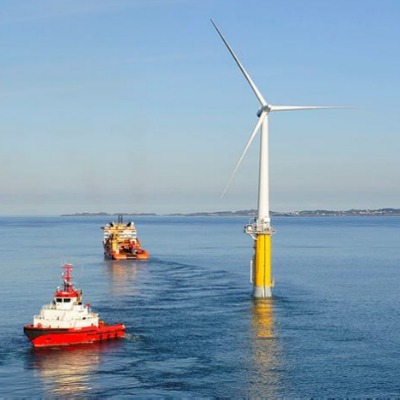 Citing delay, uncertainty and changes in the state's regulatory framework, Norwegian energy company Statoil says it will ‘demobilize all activities and resources’ associated with its 12 MW Maine-based offshore wind pilot project.
Citing delay, uncertainty and changes in the state's regulatory framework, Norwegian energy company Statoil says it will ‘demobilize all activities and resources’ associated with its 12 MW Maine-based offshore wind pilot project.
In less than five years, Statoil's Hywind Maine project – based on the company's floating offshore wind turbine technology – experienced the highs and lows that are often associated with emerging industries, such as U.S. offshore wind.
Statoil won a request for proposals (RFP) issued by Maine in 2009 as part of the Ocean Energy Act. The act authorized the Maine Public Utility Commission (PUC) to issue an RFP calling for 30 MW of renewable energy, including up to 25 MW of offshore wind and 5 MW of tidal energy, which was awarded to Ocean Renewable Power Co.
The proposal by Statoil – the only wind company to fully answer the RFP – called for four 3 MW floating offshore wind turbines to be located about 12 nautical miles from the Maine coast.
In January, the PUC and Statoil reached an agreement on a term sheet and began negotiating details of a power purchase agreement (PPA). The project was expected to cost the average residential customer about $0.75 extra on his or her monthly electric bill; however, the PUC ruled that the benefits of offshore wind power in the state outweighed that cost.
However, some in Maine, such as Gov. Paul R. LePage, R-Maine, criticized the contract's above-market rate for electricity. LePage, an outspoken critic of renewable energy, opposes offshore wind for fear a pilot offshore wind project would increase consumer electricity prices.
This summer, the Maine legislature instructed the PUC to put contract negotiations on hold and reissue the RFP, with the caveat that would-be applicants respond by Sept. 1.
The revised RFP, issued July 9, opened the door for Maine Aqua VentUS – a partnership consisting of Maine Prime Technologies (a spin-off from the University of Maine's DeepCWind consortium), construction services provider Cianbro and Nova Scotia utility Emera. The 12 MW floating offshore pilot project would comprise two turbines based on the University of Maine's VolturnUS technology.
When Aqua VentUS answered the RFP, it cast immediate doubt on the viability of Statoil's pilot project.
In a statement explaining its decision to abandon the project, Statoil says, ‘Changes in the framework conditions in the state, uncertainty around the commercial framework, and the schedule implications of project delays made the project outlook too uncertain to proceed.’
Gov. LePage issued his own statement: "The Administration has been perfectly clear through the regulatory process that the term sheet offered by Statoil was ironclad in its cost – placing a $200 million burden on Mainers by way of increasing electric costs. Additionally, the corporation was ambiguous in its commitment to growing Maine's economy.’
Statoil's decision to end its Maine project is a setback for the state, which through the 2009 RFP, accentuated its abundant offshore wind potential and economic development potential.
‘We regret Statoil's decision to end their operations in Maine,’ says Paul Williamson, executive director and founder of the Maine Ocean & Wind Industry Initiative. ‘While we understand there exists a level of political uncertainty in the state, political administrations are temporary, and Maine will always remain a location with world-class offshore wind resources within the vicinity of a strong market.’
Williamson concludes, ‘We will continue to remain hopeful that our strong offshore wind resource will attract future investment. We also continue to remain hopeful that the other offshore wind project in Maine, Aqua VentUS, will continue to advance forward.’
As for Maine Aqua VentUS, the PUC has placed a tentative December deadline to approve a term sheet, notes Jeff Thaler, Maine Aqua VentUS co-counsel. If approved, the parties would move to formalize a PPA.
Undeterred by its Maine experience, Statoil – the third-largest oil company in the world – notes the U.S. offshore wind market shows great potential.
‘Regardless of our exit in Maine, we will continue to explore the U.S. offshore wind market,’ says Trine Ulla, Statoil's head of business development for floating wind. ‘The U.S. holds several locations with good wind conditions, deep waters and proximity to load centers.’
Statoil says it will focus on the Hywind concept in Scotland, a project the company says it has been developing in parallel with the Maine project.
Photo: Statoil's Hywind floating turbine. Photo courtesy of Statoil.



